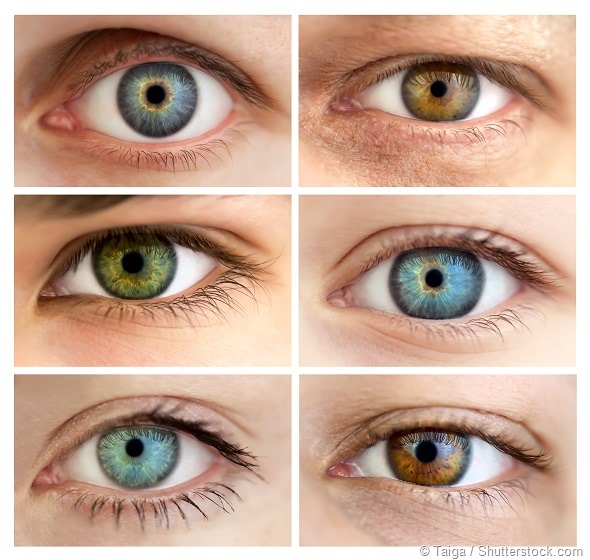The cornea is a transparent tissue lining the front of the eye, that is invisible tissue to the naked eye. It is a delicate tissue and disease or injury may lead to a loss of transparency or a change in the shape of the cornea, resulting in severe visual impairment.
For many patients, the only treatment option is corneal transplantation. This involves the removal and replacement of a circular disc of the patient’s cornea with a similar disc of healthy tissue taken from a donor cornea. The aim of this is most commonly to achieve an improvement in the overall clarity, integrity or shape of the recipient’s cornea.
The term keratoplasty is often used synonymously with corneal graft transplantation. The term cornea derives from the Latin cornea tela which literally means horny tissue; hence use of the earlier Greek word keras which means horn.
Penetrating keratoplasty, therefore, refers to a corneal transplant that includes the full thickness of the cornea. Corneal transplantation is a successful operation with overall 5 year graft survival outcomes of >74%. Importantly however, is the effect on vision, with an improvement from a median of 6/60 (able to see at 6m what a normally sighted person would see at 60m) to a median of 6/12 (able to see at 6m what a normally sighted person would see at 12m).
Not all diseases affect all the layers of the cornea, tending to affect either the anterior or posterior layers. As such, the majority of corneal transplants that are now performed, replace only the diseased layer(s) of the cornea The anterior layer is replaced in a condition known as keratoconus, whereas the posterior layer is replaced in patients with Fuchs endothelial corneal dystrophy.
Fuchs corneal endothelial dystrophy is a condition where the back layer (endothelium) fails so that the cornea becomes water-logged. This also happens after cataract surgery and is known as ‘pseudophakic’, as the cataract is replaced by a synthetic (pseudo) intraocular lens (phakic). Together these conditions account for approximately 50% of corneal transplants.
For Fuchs dystrophy the posterior (endothelial) layer is replaced. This is known as an Endothelial keratoplasty. Because only the abnormal endothelium is replaced, the anterior healthy tissues are left intact so allowing a faster visual rehabilitation.
The condition keratoconus accounts for approximately 25% of corneal transplants. In this condition, the anterior layers of the cornea become thin so that the cornea bows forwards assuming a conical shape, hence the name ‘keratoconus’. These patients are usually young and have a healthy endothelial layer lining the back of the cornea. Therefore, if their endothelial layer could be left intact and only the diseased cornea is transplanted, then not only is the risk of rejection avoided, but the patient retains their own healthy endothelium and the integrity of the eye is less disturbed.
Because keratoconus affects the anterior layers of the cornea, surgery has been developed to only replace these layers. This involves an intricate lathe or lamellar dissection removing the anterior layers, leaving the patient’s endothelium intact, and replacing the anterior layers with healthy donor cornea. This procedure is known as Deep Anterior Lamellar Keratoplasty.

What prompted your research into whether gender incompatibility influences corneal transplant rejection?
In 1957, the investigators Eichwald, Silmser and Wheeler showed that in identical mice, a male skin graft would be rejected by female but not male, recipients. Then in 1995, Scott, Ehrmann and Ellis, identified a mouse male-specific transplantation antigen.
In 2006 in human beings, Bohringer, Spierings and Enczmann in a small but important study, noted that male-to-female corneal transplants were associated with increased rejection episodes.
Despite its importance, there had been little subsequent work on gender compatibility in corneal transplants and work on HLA matching has only shown equivocal results. We therefore, recognized the potential importance of gender incompatibility and the influence it may have on corneal transplantation.
How do corneas from men and women differ?
There are no differences between a woman's and a man's cornea, except for a very slight difference in diameter. The cells of a cornea from a female, however, would not express the Y antigen.
What were the main findings of your study on gender incompatibility and corneal transplant rejection?
More than 18,100 patients were identified in the UK who had undergone a first corneal transplant. While over 80 percent of all patients included still had a functioning graft at 5 years, a higher proportion of male to female transplants failed or rejected during this time, when compared to gender matched transplants. For every 1000 people transplanted with a gender matched cornea, on average 180 will fail, compared to 220 for male to female mismatched grafts.
The effect of gender matching was especially evident in patients with Fuchs endothelial dystrophy. Of 4,046 patients with Fuchs endothelial dystrophy,18 percent of male to female mismatched grafts failed compared to 12 percent of female to female transplants. After risk adjustment, female to female transplants were 40 percent less likely to fail and 30 percent less likely to reject compared with male to female mismatches.
These findings are most likely a result of H-Y antigen incompatibility associated with the male Y chromosome. Females do not have a Y chromosome so there is no H-Y incompatibility from female donors to male patients. This effect, however, is not reciprocated when the roles are reversed, that is, when male donors are matched with transplanted in female recipients.
Was the effect of gender mismatch higher in any particular patients?
Yes the effect was most pronounced in patients with Fuchs corneal endothelial dystrophy and in keratoconus.
What do you think is the reason behind the lower failure and rejection rates for gender matched transplants?
It is important to note, that corneal transplants predominantly fail because of endothelial failure (the cells lining the back of the cornea). The endothelium may fail from senescence, inflammation or other factors. Although rejection is an importance cause of graft and endothelial failure, it accounts for a relatively small percentage of graft failure.
Our findings would suggest that the gender (H-Y incompatibility) leads to a less tolerant environment in the eye for the donor cornea possibly mediated through an immune response.
It is also possible that differences in sex steroids such as androgens, estrogens and progestins, may contribute to this effect as they have been reported to account for many of the gender-related differences in the eye.
In organ transplants there is evidence that female recipients of male organs have higher rates of acute immunological rejection in cardiac, hepatic, pulmonary, and renal transplantation. This gender effect may be overshadowed by the effect of HLA matching in organ transplantation, whereas in corneal transplantation, HLA matching has not been shown to be of significant benefit.
What impact do you think the findings of your study will have?
We hope that it will lead to consideration for a change in policy for corneal transplantation in situations where there are sufficient donors.
Will further studies be required to confirm the findings and justify gender matched transplants?
It is important that other centers in the world investigate these results and undertake similar work. Although it would appear that the effect of gender incompatibility is based on H-Y incompatibility, there may be other gender related factors, which are of importance. We would therefore, like to undertake a prospective study, examining in more detail these and other potential factors.
In addition, there have been and continue to be, important developments in the surgical techniques used to perform a corneal transplants and these will need to be taken into account in future studies.
Is gender matching likely to cause delays in donor tissue allocation to patients?
Potentially yes, if there are insufficient donors.
Where can readers find more information?
- Bohringer D, Spierings E, Enczmann J, et al. Matching of the minor histocompatibility antigen HLA-A1/H-Y may improve prognosis in corneal transplantation. Transplantation 2006; 82(8): 1037-41.
- Eichwald EJ, Silmser CR, Wheeler N. The genetics of skin grafting. Annals of the New York Academy of Sciences 1957; 64(5): 737-40.
- Goulmy E, Termijtelen A, Bradley BA, van Rood JJ. Y-antigen killing by T cells of women is restricted by HLA. Nature 1977; 266(5602): 544-5.
- Scott DM, Ehrmann IE, Ellis PS, et al. Identification of a mouse male-specific transplantation antigen, H-Y. Nature 1995; 376(6542): 695-8.
- Kawauchi M, Gundry SR, de Begona JA, et al. Male donor into female recipient increases the risk of pediatric heart allograft rejection. The Annals of thoracic surgery 1993; 55(3): 716-8.
- Prendergast TW, Furukawa S, Beyer AJ, 3rd, Browne BJ, Eisen HJ, Jeevanandam V. The role of gender in heart transplantation. The Annals of thoracic surgery 1998; 65(1): 88-94.
- Candinas D, Gunson BK, Nightingale P, Hubscher S, McMaster P, Neuberger JM. Sex mismatch as a risk factor for chronic rejection of liver allografts. Lancet 1995; 346(8983): 1117-21.
- Roberts DH, Wain JC, Chang Y, Ginns LC. Donor-recipient gender mismatch in lung transplantation: impact on obliterative bronchiolitis and survival. The Journal of heart and lung transplantation : the official publication of the International Society for Heart Transplantation 2004; 23(11): 1252-9.
About Professor Kaye
 Professor Stephen B. Kaye is Consultant Ophthalmologist at the Royal Liverpool University Hospital and University of Liverpool. Through his work on corneal transplantation and ocular infections, he has achieved an international reputation. He contributes on national and international platforms to advance our knowledge of corneal transplantation, corneal angiogenesis and infections of the ocular surface. He leads the Cornea and Ocular Surface Disease Service at The Royal Liverpool University Hospital and is Director of The Liverpool Research Eye Bank. Professor Kaye also leads the National Microbiology Infection Group and was chair of The Ocular Tissue Advisory Group whose efforts have directly impacted on patient care and improved the standards & outcomes of corneal transplantation.
Professor Stephen B. Kaye is Consultant Ophthalmologist at the Royal Liverpool University Hospital and University of Liverpool. Through his work on corneal transplantation and ocular infections, he has achieved an international reputation. He contributes on national and international platforms to advance our knowledge of corneal transplantation, corneal angiogenesis and infections of the ocular surface. He leads the Cornea and Ocular Surface Disease Service at The Royal Liverpool University Hospital and is Director of The Liverpool Research Eye Bank. Professor Kaye also leads the National Microbiology Infection Group and was chair of The Ocular Tissue Advisory Group whose efforts have directly impacted on patient care and improved the standards & outcomes of corneal transplantation.